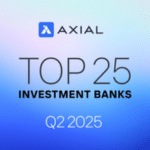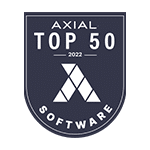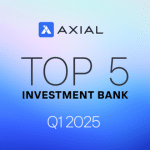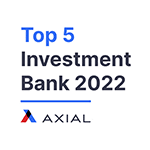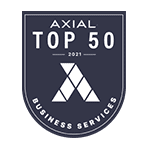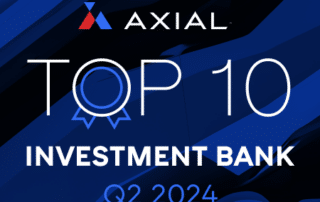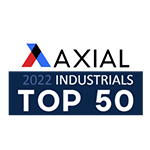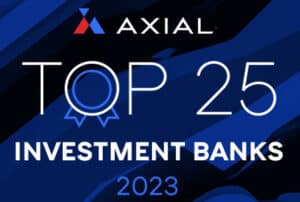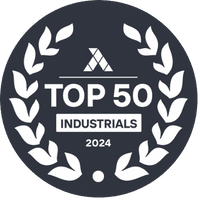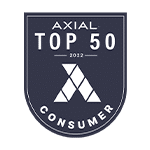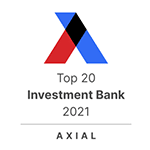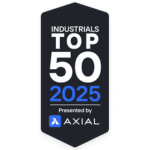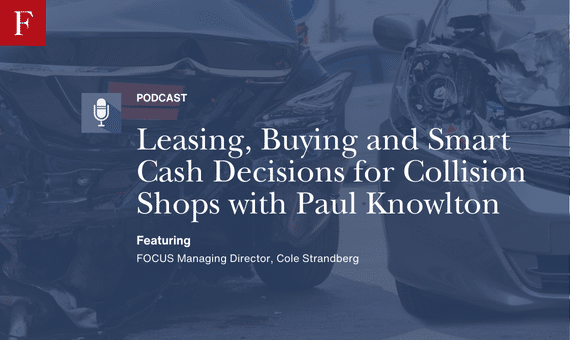
Leasing, Buying and Smart Cash Decisions for Collision Shops with Paul Knowlton
On this week’s episode, Cole Strandberg chats with an Paul Knowlton, Senior VP of Sales at PEAC Solutions. With deep experience in equipment financing and a keen understanding of today’s credit landscape, Paul unpacks the real mechanics of financing your next equipment purchase. They talk leasing vs. buying, how to think about preserving cash, when to use a line of credit, and how SBA options can play a role. Paul also shares how PEAC evaluates deals today—including their flexible “C” credit approval program—and what shop owners need to know about the new tax bill and its implications for capital equipment decisions. Whether you’re a seasoned operator or a first-time buyer evaluating your options, this one is packed with insight you can take to the bank—literally.
Cole Strandberg: Looking forward to an awesome conversation. It’s always a pleasure to get together. It’s been too long since our last face to face space, but we’ll take this. This is pretty close to that. Want to dive right in here? I’ll link our previous episode so folks, if they didn’t catch that can do so and get some background on you. But obviously today we’re going to talk about how to finance the equipment that you need to not only have a shop and and own a shop and work in a shop, but to be really successful in a shop and and that cash flow management fee. Figuring out how you can afford the right equipment is so so important. So let’s start with the basics. What are the main types of financing available for folks looking to buy Equipment for their body shops.
Paul Knowlton: Thanks Cole. I am specifically focused on this type of equipment. So pretty much anything used in the shop ranging from welders, measuring racks, we’re doing ADAS equipment, wheel and tire equipment, we do spray booths generally equipment finance. You can also find solutions for the front of the office to phones, furniture and such. But again I’ve specifically been focused on the equipment used by this industry and so mostly all the revenue producing equipment used in the, in the back room.
Cole Strandberg: Fantastic. I mean we, we go way back, back in my time for the equipment distribution side of things. So I know and appreciate all that you do. There’s a, I think a miscommunication maybe throughout the industry on a couple of key terms and that is financing versus leasing in the context of equipment. Talk to me about the difference of those two things. If there is a difference.
Paul Knowlton: Yes there is and yes there is some confusion. Most of what we do is financing and the primary difference between a lease and a finance is the back end and a residual. A lot of people are familiar with a car lease and in that situation there’s usually it’s a closed in, you know what the residual is going to be based upon the mileage and such. So you know all the factors involved with that type of lease. The fair market value lease that exists in the equipment finance world is generally it’s an open end lease. So there’s a fair market value purchase option at the end which is basically going to be what that equipment is worth at the end of the lease. Those type of financing have a lower monthly payment. But then again there is the back end where the customer can decide whether they want to renew it, buy it, return it. As I say in my career, 99% of what I’ve done has been financing which are either dollar buyouts or equipment finance agreements. These are full payout contracts. They act like small fixed rate loans and as such the customer owns the equipment, they get the depreciation and when you’re done with the final payment, you’re done. So most of what we talk about is financing versus leasing. But it’s a very good question because it’s one that I talk to a lot of clients about when they here of leasing. Because in my industry there’s. We are a leasing company because we do particularly say for example forklifts. Those are often done on fair market value leases. Companies want to turn those over and keep the, keep the forklifts new. But again, in the space that I’ve been in my whole career, it’s almost predominantly the dollar out or the FA makes total sense.
Cole Strandberg: When should a shop consider kind of leasing versus buying outright? I’m different variables that go into that.
Paul Knowlton: Yeah, as I mentioned, the forklift was one and for the first time in my career we’re, we’re, we do have a product for a welder. It’s products that tend to have a count or usage component to it. So most welders are sold now. We, at the end of three years we can see what the weld count is and we can kind of determine what the, what the value is. And so we are running a fair market value for a welder right now. Again, it offers a much, much lower payment. So there’s kind of two categories that I think it appeals to. One is somebody that’s really pretty tight on money and that full payout loan payment, if you will, is just too high. This fair market value will give a much lower monthly payment and make it a little more accessible. The other client it might appeal to is like a highly functioning shop that’s doing a ton of jobs and they always want to have a three year or newer welder in the shop and in the tech’s hands, you see it with copiers, for example, it’s like we’re just going to spend X amount a month to have a three year or newer piece of equipment working. So I think there could be an appeal to both of those type of customers that want to just kind of return it at the end and get a new one. The other place it might be is if somebody wants to kind of try it out, you can go in with a lower payment over 36 months. It’s less than the total cost of the equipment. And so that could allow you to see if that’s the right solution for you. And then if it is, you acquire it or you buy a new one. So it gives flexibility with a lower monthly number. So there are different appeals for that.
Cole Strandberg: It’s actually a more compelling answer than I was anticipating. The weld count thing is super helpful and makes total sense. How about as an example, the biggest expense of equipment in the shop, a paint booth. How should we think about that? What kind of differences should we anticipate for some hundred thousand dollar plus piece of equipment between those routes?
Paul Knowlton: Yeah, that’s a really good question or comment. I think of a paint booth as a small construction project. It’s really a tenant improvement to the facility. There’s also a ton of soft costs involved with a spray booth. So you may end up, and I’m just using General numbers, Nobody’s pricing but $100,000. Spray Booth may have $50,000 of Booth 60,000. And then there’s the installation, the shipping and the delivery. There’s the permitting, getting the utility hookups, the design features. So it is like a small construction project. So those tend to. And a booth generally lasts longer than a welder. So we tend to see those at five, six, seven year terms. Nobody’s going to take a residual on a package like that because again of the soft costs and the inability to simply return your booth at the end. It’s not like the welder where they can just ship that somewhere. So what we do is we do see those tend definitely tend more to the capital lease and the full payout contracts a lot of times. And just another feature with those is like a construction project. There’s usually progress payments required, certain amount paid up front to get the booth ordered, another one segment, maybe another 50% due when it ships or when it delivers and then a final hold back for completion. So finance companies can handle those progress payments in different ways, but all of them include not having to go out of pocket for the, for the customer. And we tend to see those with expanding enterprises. The guy that who’s buying his third or fourth shop and he buys one and there’s a pretty long in the tooth booth in that facility, so he’s upgrading equipment or somebody again that’s been in business a long time and simply wants to upgrade what they’ve got. But those do tend again be the full payout longer term contracts makes total sense.
Cole Strandberg: And when talking about paint booth pricing, for example, I think that’s a good asterisk next to it. I’m afraid with that $100,000 mark, we might be speaking in 2019 terms. Not so much 2025 terms. I know some of the pricing getting crazy. We obviously you’ve been in and around this industry for a very long time. I’m getting there myself. We’re in a pretty old school industry where a lot of our entrepreneurs and business owners and operators are kind of prideful about the lack of debt business. Kind of prideful about, hey, we pay cash for everything. Talk to me about why paying cash might not always be the best move, even if you have that cash sitting around in your bank account.
Paul Knowlton: For sure. And I do, I agree with that and I hear it daily. You know, I’ve always paid cash when I’m talking to a customer, it’s like that may be the right decision, but the fact that that’s always been the decision doesn’t make it the right answer for this one, because customers have to make two decisions when they’re doing an acquisition. They have to decide what to buy and they have to figure out how to pay for it. And it kind of depends on the purpose of the acquisition. If this has been a long planned project and money has been accumulated for this expansion or this replacement, then that cash has been put aside and that may make sense to pay cash. If it’s a replacement, you know the equipment breaks and needs to get replaced. That’s going to be a hard hit on your working capital, just pulling that out unexpectedly. So financing and spreading that over time makes sense. The other areas too, we see it, as I mentioned, expansion or OE certifications, both of those have a lot of other related costs to them. Expansion, there’s going to be a ton of other costs that aren’t financeable. OE certification often requires additional training, text, traveling, other costs that again aren’t financeable. So it could make a lot of sense to spread the fixed asset costs out over time for those purposes. And you know, I listen to a lot of the advisors and consultants in our industries. I go to a lot of their presentations. Working capital conservation is key. It’s the lifeblood of a business. It’s that what, it’s what pays the payroll, pays the rent. Cash in the bank gives company a lot of flexibility. So again, once you’ve written a check for that fixed asset, that money is locked into that asset. Now you can’t get that back. So maintaining working capital flexibility is a big benefit in almost all economic markets. But again, kind of with the one we’re in now, which is a little choppy waters, a little bit of uncertainty, having your powder dry and maintaining your working capital is really valuable. It can allow you to take advantage of opportunities. There may be a shop that opens, goes for sale that you weren’t ready for. And if you just put 150 grand of cash into some fixed assets, that’s going to reduce your ability to maybe take advantage of that. So cash can be right. But I think it’s always worth making that decision each time and not just simply blanket saying, I always write a check.
Cole Strandberg: Well put, man. Cash flow, cash lifeblood of a business, 100%. And that opportunity cost, that’s a lot of buying power when you’re willing to incorporate some element of leverage or credit or debt, however you want to term it.
Paul Knowlton: Yeah, and it may be a blend too. As I say, if it’s, if there’s a project where there’s fixed assets and other costs, it’s like, all right, finance that. Or you can always put a down payment on a fixed asset and do a blend of some cash into it and also some debt.
Cole Strandberg: Not to jump ahead because we will get there. But in terms of a typical structure with you, what type of down payment is typically required, if any?
Paul Knowlton: Generally we get the first and last payments. So a 60 month contract will get two payments up front and there’s 58 payments left. We can always accommodate that if somebody wants to go with no money up front. But again, I’ve been doing this a long time. That’s a pretty standard structure I do have. Customers will say, well, I have a certain monthly payment in mind. What would I need to put down to hit that? So we can always squish the balloon and come up with a solution that fits right for the customer.
Cole Strandberg: I know you’re a creative and helpful guy, so I’m not shocked by that. All right, so say you’re working with a business owner. They have not historically used debt, they’ve historically paid cash. They’ve accepted that in this instance, using some element of debt or financing is going to make some sense. Why should owners or when should owners consider financing equipment rather than tapping into a line of credit or something along those lines?
Paul Knowlton: Yeah, that’s another again that how to pay for it question can be answered a lot of different ways. You know, cash, bank loan, equipment, financing, line of credit. Prior to coming into the equipment finance world, I was a business banker, worked for banks we’ve heard of and I’ve sold lines of credit and real estate loans. Lines of credit are meant for short term working capital purposes, expanded payroll, marketing capabilities, buying some inventory and reselling it. A line of credit is meant to be repaid within 12 months and a lot of banks want to see the line of credit at 0 for 30 days over 12 months. So it’s a very much a short term situation. And if you get in the habit of financing fixed assets with short term debt, your balance sheet is going to get locked up at some point. Matching the asset life with the debt life makes financial sense and your accountant will be happy about it as well. So if you’ve got a five year asset that you’re acquiring, financing it with a three or five year debt term makes sense. Again, if you start putting a lot of fixed assets into a line of credit, it’s going to get frozen at some point and your banker is going to call up and say, hey, we got to turn this out. That’s not to say that if you know that there’s a big large chunk of cash coming within four months for whatever reason, then putting it on the line might make sense. But generally you want to match the life of the asset with the term of the debt.
Cole Strandberg: Makes sense. Yes, it’s. Even if it’s not cash, tapping that line of credit for something long term, it still impacts liquidity. And you have a line of credit to aid liquidity. Makes total sense. I think if somebody’s listening to this here and thinking about expanding their operations, replacing equipment, things along those lines, the next obvious question is do I qualify to get approved for financing? Talk to me about what all goes into the approval process.
Paul Knowlton: Yeah, and it’s not super complicated. And again, I’ve worked at a few different financial institutions, I’ve been a banker. The same five Cs of credit exist of credit character, collateral capacity and such. But in our world, a lot of times, particularly deals under 200 grand, we’re just working with a credit app. So the primary indices we’re looking at are time and business. Longer the better. Typically three years or more is what we’re looking for. We look for comparable debt that the company has borrowed a similar amount of money in the past. We find that out through Dun and Bradstreet, through Paynettes, through commercial credit reports. Most of my clients are closely held companies. So we are looking at the personal credit of the owner and we’re looking for clean credit there, no bankruptcies or judgments or foreclosures and type of thing. If you’re hitting all of those areas, you’re very likely to get approved once. And every company has different amounts. Once we get over that $200,000, we start to get into financials and that’s primarily tax returns for our customers. And we’re obviously we want to minimize our taxable income. So we’re very good at reviewing those kind of tax returns to see the write offs, the depreciation, the rent paid to the owner to kind of get to a true cash flow for the company. I would say too that based upon the kind of equipment that I’m financing, the type of customers, we’re at a 90% type of approval rate with companies that do meet those factors. The one thing, and you mentioned other people that pay cash, if they’ve always paid cash and they, and then they come out and look to borrow $100,000 and we’ve never seen $100,000 debt before, that’s a little friction in the process. So companies that there’s Another benefit to financing is just having that comparable credit on your report that makes it easier for you to access credit later as well. So those are the primary keys which lead to what if you don’t meet some of those criteria and typically the one that we’ll have a challenge with is the time in business. And those are like if. If you and I opened up a shop and six months from now went to borrow some money. It’d be a little hard though. You’ve been steeped in the industry. I’ve financed a lot of quit. We have not owned and operated a, a body shop in the past.
Cole Strandberg: Don’t tempt me with a good time.
Paul Knowlton: Paul. You know what? It looks like we the company I work for now Peac does have a new business approval. It’s only up to $25,000. It usually could be a piece of the puzzle for a total equipment solution. But I encourage people to do that. It’s priced at a different rate than it’s a C credit versus an A credit. But what it does do is it does build credit for you immediately. So when you do pass that two years time in business you have the comparable debt, you’ve got the time in business, you can now access the A rate. So there are business reasons to look at a C approval as well.
Cole Strandberg: I want to dive a little bit more into that. But a few interesting things that I would reiterate there and it’s counterintuitive but lenders like to see other examples of lending and borrowing rather which is is again very, very interesting. Kind of reminds me of the credit card world. Right. It’s easier to to get approved for credit cards. If you have a history of credit, you’d rather have a good credit than no credit, even if it’s not a great credit. Which I think is really, really interesting. And the new business approval from my perspective, that’s a pretty new addition. Now you mentioned A tier. I don’t think you mentioned B tier but obviously that’s a big component. And then C tier approval quantifiably, how should we view those in terms of differences in terms.
Paul Knowlton: Yeah. And that’s. And again every finance company I’ve worked for and out there has different definitions of the different segments. We put our A and Bs together. So A B might just be. It lacks the comparable credit. But the owner has 800 score, he’s been in business 10 years. So we may technically call it a B, but it still gets priced and structured the same way as an A deal does. And that’s the point too is like, you know, there’s all these components and if one of them is short, but the others are strong, most companies can underwrite it. The other benefit too of working like with ourselves is we’ve been in this space for a while, we know these businesses. So when we get a deal in from one of our programs, we’re looking for ways to say yes, not a way to decline it. A generalist who’s just looking at doesn’t know a body shop from a real estate company and they see these metrics come in, they’re looking for reasons like why it doesn’t fit the parameters. So we’ll talk about financing partners later. But it is useful to have somebody that’s familiar with your industry and from a, you know, pricing perspective, you know, the. We’re in the. We’ll talk about rates now. Like our AB deals are 7 to 8% ish. The C deals are going to be 11 to 13% ish. But again, because they are on smaller ticket items, the difference in the monthly payment isn’t significant. And again, being able to conserve 25 grand, spread those payments out over three years, build credit, you know, that starts to make a case for making the business decision to do one of those structures.
Cole Strandberg: Makes total sense and super helpful. I appreciate you sharing numbers there because I think it helps us as listeners kind of paint their picture and get a sense of how does this look in reality goes a long way. You mentioned lending partners. Let’s talk about that now. What does make a good lending partner? Why is one size not necessarily one that fits all?
Paul Knowlton: Yeah. And your customers, our listeners know that they are in a high telemarketing segment, they are probably receiving one or more calls a week from leasing companies offering their services. So generally, yeah, if you’re interested in buying equipment and you’re in the market, you can certainly talk to them. But I just say there’s a yellow flag with those type of companies. They may be doing office copiers and other type of equipment. They may or may not know your business well. Generally your vendor is a good source for referring a financial partner. A large percentage of my deals come from the partnerships I have with different equipment manufacturers and distributors. We also go to conferences and deal directly with end users. There are franchise groups and other 20 groups, for example, that we participate in. So those type of sources, your vendors, your, the resources that you have, the advisors you have, can be a good source for pointing you in the right direction. And then, and for example, when sometimes the manufacturers we work with will subsidize rates so you can get a sub market rate by working with your vendor’s finance company. So you can also those 7 and 9% deals can come down to 0 to 3% depending upon the type of program that’s running. But ideally it’s similar to your equipment vendor decision is know who you’re working with, do they have experience in the industry, do they have a good reputation and such. So the same way with the finance company you work with is, you know, compare pricing. There’s usually not a lot of difference between the good players and then get the ones that can be most convenient and easy for you to work with and ultimately one that you can build up some trust level with.
Cole Strandberg: Listeners of the Collision vision know I am a big believer in specialization. Work with folks, I don’t care in what capacity but if it’s in this industry, work with people who know this industry because there are some unique components and intricacies in our industry where if you don’t know a general lender certainly could get stumbled up and, and you know, decline you or take a longer time to get approved and kind of mess up some plans.
Paul Knowlton: You might, you also see and a lot of people will say well I’m going to go to my bank and again having been a banker, I know that $40,000 credit requests are not my favorite thing and I’m just picking a number. But again the bank is may want a down payment. They’re not designed for speed and convenience so that may take a while. And ultimately again from a pricing perspective we’re were priced comparably to what the banks are offering as well. So certainly call your bank. But I’m quite confident that myself or other equipment finance companies will be responding in hours versus weeks when you’re talking to your bank.
Cole Strandberg: Yeah, bankers hours aren’t called bankers hours for no reason. I get it. Not always the sense of urgency you want to see. I want to jump back real quick to the approval process you mentioned. Under a certain level it’s, it’s a pretty simple credit app. Above a certain level it gets a little bit more intensive potentially. How has the credit approval process changed in. In kind of today’s unique macro environment.
Paul Knowlton: Yeah. And that’s kind of. Well, it’s fascinating to me maybe to your clients too. But one thing that I see is like my credit guys now Google applicants. So if, if they physically go to the Street View and look at the, look at the location they look to see if there’s a website. So these are all soft Things that are involved. But again, if, if you’re considering having a website versus just a Facebook page, it’s your customers are doing the same thing. So just think of, you know, the credit guy as being somebody that’s shopping for a body shop and, and taking a look at some exterior type of factors. Those do play in what we’ve also seen. And something that Peac has taken a great advantage of is we can make a decision in seconds. You know, an application gets entered and I’m immediately getting an approval because it has hit all those boxes. So a lot of automation has helped the underwriting process. The better companies too, when it kicks out and hey, why did it kick out? Can we mitigate it so that there’s an individual in there kind of helping with any deficiencies? We haven’t. The places I’ve worked, our portfolios have been performing really well. The shops, they may go through some up and downs, but the equipment we’re financing is mission critical equipment, they’re keeping their payments. So the portfolios have been performing well. We want to grow this sector. It’s not recession proof, but it’s recession resistant because insurance funds a lot of stuff. People still crash their cars whether the economy is good or bad. So we’ve really enjoyed the collision in the repair space and automotive repair too. In terms of tire and wheel work, those shops tend to be continuing to do well and to pay us. So I haven’t seen any tightening or any change in the deal. The deal we did four years ago we’ll do today is kind of what I’m seeing.
Cole Strandberg: All right, very good. Albeit potentially at a different interest rate, I would imagine. I want to throw a couple of just general prompts your way that are either in the process of impacting our industry or could impact our industry down the road a little bit. The first of which is interest rates. How should folks think about those impacts in terms of growth and financing?
Paul Knowlton: I think rates are moving within a band. I think they’re going to drop, but they’re not going to drop 4%. They’re going to drop a quarter or a half. And on the type of financing we’re looking at of even a $200,000 deal, that type of movement in a rate isn’t going to change the monthly payment very much. So I’d advise people to not try to time the market and trying to get the lowest possible rate you can get on some equipment financing. We are still at historically low levels. I know it’s, I’m a lot older than you when I Came out of college, prime rate was 18% and we were still buying and selling equipment and doing business. They’ve been at historically low levels for quite a decade or so, you know, and they floated up to where they are. But I still think it’s not the biggest determinant or should be the biggest determinant in making an equipment acquisition decision. And what goes down will eventually come back up. So again I don’t see a big movement of multiple points spread changing. I do see kind of incremental changes. So from an equipment acquisition point of view, I don’t think it’s mission critical decision. From a macroeconomic point of view, I think obviously people feel better about investing in their businesses and spending money if, if it’s not a higher rate environment. So I think we’re approaching one of those swings. But caveat, I do not have a glass looking glass that’s going to be.
Cole Strandberg: That’s why we have you on here. I was planning on just some concrete evidence for what we’re going to see in the future. No, that’s perfect and very helpful and, and I think keeping that in perspective is really appropriate. I. Words from a friend of mine resonated and for an entrepreneur, there are very few investments in the world, if any, that are going to provide a return like investing in your own business will. And traditionally speaking movement in a couple points, one direction or the other is, is not going to make or break that from being the case. So good to know. The other obvious macro indicator we want to talk about or macro event we want to talk about is tariffs. How should we be thinking of tariffs when it comes to equipment?
Paul Knowlton: Another crystal ball. But I would say there’s going to be price increases how much and timing and such are open to guessing and such. But you know, and this kind of goes to making a decision now versus later. If you’re pausing because you want to see what’s going to happen, well, I can tell you it’s going to go up. We have seen a lot of our distribution channels have product in country already, so it’s not affected by tariffs. So as you’re buying equipment that may have some European origins as that equipment moves out of the current warehouses and comes in from Europe, it’s going to have a different cost component to it. I think our manufacturer partners are going to do the best they can, but there will be price increases. To what extent I don’t know. But obviously the other challenge is we do have product that’s compiled or put together here, but still is relying upon Foreign raw materials or components that will work their way into the pricing channel at some point. So I mean my suggestion would be is if you’re looking at making an equipment decision this year or next year, it’s going to be cheaper this year and maybe make more sense. And just in general too is like if this equipment is revenue generating and is going to allow you to increase revenues, take adas for example. Maybe it’s something you’re not doing now, but you see how many you’re sending out and you how many you could add. It’s like pausing on that is pausing on turning the spigot on as well. Trying to time a market is always difficult. But if in general the demographics make sense, then move forward and start generating this revenue and don’t wait for a half a point drop in the rates or wait to see what’s going to be the cost of the equipment. Those will be different in the future. The only one you’re going to know now is now. So encourage people to do the evaluation and then pull the trigger and make a decision.
Cole Strandberg: Sound advice from my perspective. I guess one last macro piece is a new ish bill that is is in place now. From a tax perspective, how does the new tax bill impact equipment financing and how should shops approach that?
Paul Knowlton: Yeah, again this is good news on that front and section 179. Let me, I won’t get into the weeds here but when we were talking about leasing versus financing and you know, 99% of what we’re doing is financing these, you own the equipment with that type of financing. So since you own the equipment, you get to depreciate it. And depreciation via section 179 has been a great way for companies to write off the entire cost of the equipment rather than having to depreciate it over a number of years. That depreciation or that was section 179 with the new bills going up to two and a half million dollars. So for the vast majority of the customers that I work with, they’re not spending two and a half million a year on fixed assets using a capital equipment lease. EFA allows you to minimize the outflow but then maximize the tax deduction. So the Good news around 179 is it’s been increased. Also again for bigger companies there’s a bonus depreciation. 100% bonus depreciation was extended. A lot of our companies are Pass through companies, LLCs and sub Ss. The qualified business income credit has been extended which just means if you end up with money left in your company, that credit will continue. There’s also a couple clean energy tax credits that may be pertinent to our industry with solar H Vac upgrades and EV charging stations. Those may be available. Have some tax credits available. As I always say, Talks to your tax guy. I’m not tax person but there are certainly reasons to talk to your tax guy. One other reason right now too is it’s really smart at this point to talk to your tax guy. Give him your P Ls start to anticipate what your year end profit situation is going to look like because there could be some very major advantages to acquiring equipment before the end of the year versus next year in terms of being able to get that section179 write off and be able to lower your tax liability for this year. It’s hard to talk to your tax accountant on December 10th and get an answer and then buy equipment in three weeks. That’s always been one of the big things at SEMA I feel is like people are going there with knowing that there’s always promos and price advantages and stuff but that I do need to get equipment ordered and get it in by the end of the year for my tax accountant to be happy. So again I would be calling your tax guy around now ish and making sure they kind of you can kind of see what your projected situation is going to be like.
Cole Strandberg: Riveting stuff, taxes. That’s why we’re all tuning in here. But some great advice and always makes sense. I always put the same caveat whenever we’re talking about taxes. Talk to your tax guy. I’m not a tax guy. Paul’s not a tax guy. But I think a really good primer for some things to be thinking about. Paul, you’ve been wonderfully generous with your time today. So I want to kind of bring it all back together before we part ways with kind of two last questions. And the first one is put your body shop owner hat on and say you’ve not really gone about financing much equipment or doing a whole lot on the debt side. What should I be doing now if I anticipate making some big purchases here over the next six to 12 months and growing like crazy. How can I put myself in the best position possible to secure that financing?
Paul Knowlton: Like a lot of things, the sooner the better. I’ve worked with a lot of clients who do have those kind of expansion plans that are six to nine months, but we’re talking about and getting lines of credit approved now just so you take that potential delay out of the picture later and conceivably there could be a lot of it times with on the bigger projects, you know, are your 24 taxes filed yet? But just getting a handle making sure and in general, whether you’re looking for financing or not is like keep all your financial stuff up to speed and up to date. Take a look at your P and L and your balance sheets and again, maybe this isn’t an acquisition for the year end, maybe it’s the next. But you know, starting our conversations early because again you got to decide what to buy and you got to decide how to pay for it. And the more options you have for both those decisions, the more flexibility you’ll have when the time comes. One thing too is, and again I mentioned, you know, like we look at the personal credit of the ownership but sign up for those credit scoring companies and you know, and a lot of those are free so that you can see what your score is. But it is valuable and not just in my industry but if you’re going out to get a mortgage or something is have an idea what your score is and just if it takes any remediation, start, start working on that now. But that is, it’s, it’s an asset that you want to maximize.
Cole Strandberg: Love it man. Great advice there as well. Always sooner better than later. The only better time to start than yesterday is today. So if that is in the cards, go ahead and get rolling on it. Makes total sense from a broader perspective. We’ve mentioned the term ROI a few times throughout our conversation today. At the end of the day, we all have a passion for this industry to one extent or another, but we’re doing this because it makes money. There is an ROI component. How should shops evaluate ROI on purchasing new equipment before they go ahead and write that check or spend that cash or get that financing?
Paul Knowlton: Yeah, and a bit of that goes back to what we talked about before is what’s the purpose of this acquisition? Is this something do you. Is your current equipment just wearing down and repair costs are increasing? Are you simply going to be replacing revenue that you’ve got now that’s going to have a different ROI than new equipment that could allow you to increase the number of jobs you’re pushing through. So kind of looking at what the anticipated revenue is from that equipment. If it’s, you know, again replacing something that’s already in the shop, you have a general idea of how much you’re making on that. If it’s a new type of, maybe you’re Going to add alignment or add ADAs. A little more pencil work, but know your demographics. How many are you sending out now? How many do you think you could get if you had that capability? And start trying to identify the revenue side and then your ROI can be it’s either by financing it, you can turn those kind of projects into cash flow positive within a couple months because you’ve got a fixed cost on your equipment, you start doing these jobs, you can be positive right away versus maybe a three year payback on it. So those are different measures but again a lot of it is and it’s, it’s homework and it’s hard work spending the time of thinking about the front end, how much revenue there is and then again investigating the cost of the equipment. There’s a wide range of solutions in every equipment category and you’ve got to look at what the right one is for you. And again I think as people make equipment acquisition decisions, I think this is a truism. You get what you pay for and if you’re looking to minimize the cost on something, you’re probably going to minimize the return on that asset as well. In addition to the functionality of the equipment and working is what is the, what is the service behind it? Can somebody show up if there is a problem? So other factors than just the price of the equipment to consider?
Cole Strandberg: Yep, it’s about value maybe more than price in a lot of, a lot of situations. Makes total sense. Paul, you are an absolute wealth of knowledge space for folks who want to learn more about your offerings at Peac and get in touch with you. Where can they do that?
Paul Knowlton: You can reach me directly at 415-933-9693 or my email is [email protected]. I appreciate the conversation and again I really, I’ve just been thrilled to be in this industry and it’s fun to be able to work with the business owners and see them successful and either add on shops or continue to grow their business. And it’s just one of my, my favorite things to do.
Cole Strandberg: Love it man. Well, hey would echo that sentiment 100%. Really appreciate you Paul and appreciate you taking the time to join us once again here on the Collision Vision.
Paul Knowlton: Thanks a lot Cole. Be well and congrats on the baby.


